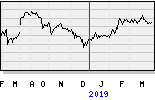
Peter Singleton, principal scientist/engineer, PackDev, Blades & Razors, Procter & Gamble comments on the year ahead.
Much effort is currently being expended to develop more packaging materials from renewable sources; so expect to see more of them in 2015. Some of these materials will result from finding new uses for existing waste materials which I would like to illustrate with two examples.
High quality formed pulp packaging has made significant progress into products that were previously the domain of plastics. Examples are packaging for mobile phones, computers and razors. Formed pulp has demonstrated that it can compete with plastics from the commercial, protection and design perspectives and wins out environmentally/sustainably and for consumer acceptance. The premium formed packaging revolution started in Asia for mobile phones and computers and is now moving into Europe and North America. The pulp fibres currently used are based around bamboo and bagasse and the challenge now is to replace these fibres with widely available waste agricultural fibres like beet, wheat straw and rice husks. There is work progressing in Europe that should see commercial beet fibre packs available in 2015.
By bioplastics I mean plastics as currently used like polyethylene, polypropylene and PET but manufactured from renewable feedstocks, not from oil. Currently the major source for bioPET and bioHDPE is sugar cane via fermentation to ethanol and then to plastics. Examples are “plant” cola bottles and bio shampoo bottles.
However, although this route produces plastics that are indistinguishable from the current oil based plastics they come at a significant premium. The real challenge here is to develop innovative processes that will take current waste agricultural fibres like beet, wheat straw or rice husks and produce plastic feedstocks and do this commercially.
Pulp packaging and bioplastics would then be taking agricultural waste materials and converting them either directly into pulp packaging or indirectly into bioplastics. This would both create value from current agricultural waste materials and give a massive sustainable/environmental boost to the packaging industry.
d.d. 9/1/2015
Boekje Corbion
Active as of 09 Jan 2015 17:13 CET
# ORDERS # SHARES BID PRICE ASK PRICE # SHARES # ORDERS
2 214 13,44 13,46 102 1
2 142 13,43 13,475 696 4
2 275 13,425 13,48 94 2
2 92 13,42 13,485 40 1
1 81 13,415 13,49 87 1
1 79 13,41 13,495 58 1
3 2.068 13,40 13,50 51 1
3 6.702 13,35 13,51 739 1
1 142 13,345 13,54 1.170 1
1 1.476 13,335 13,56 1.476 1
18 11.271 Total 4.513 14
Het aandeel Corbion wordt weer afgetrapt, de meeste Corbion beleggers kennen deze info niet!
Orderboek Corbion om 17.40 uur d.d. 9/1/2015
Orders Volume Bied Laat Volume Orders
koop 1 8.178 13,51 13,56 120 1 verkoop
1 673 13,49 13,57 331 2
1 196 13,485 13,575 1.178 1
1 1.178 13,465 13,585 806 2
1 10.000 13,46 13,60 5.860 5
Waar zijn al die kleine aantallen? Zo wordt het aandeel teruggezet en romen partijen de markt te Amsterdam AF!
